#ancient jewelry
Text
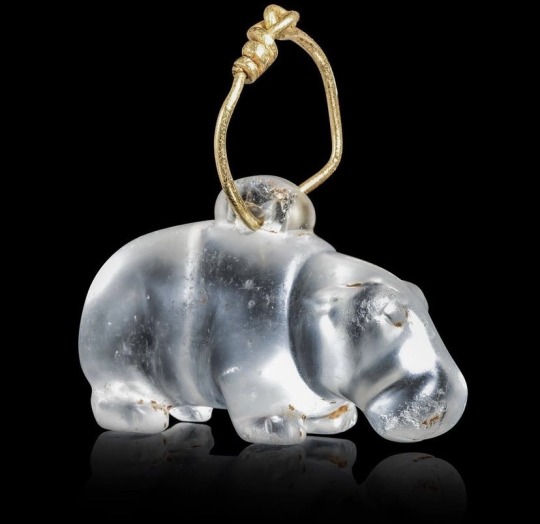
An Egyptian rock crystal of a chonky hinpopotamus amulet
(Middle Kingdom, ca. 2050-1650 BCE)
Amulets were worn by ancient Egyptians for their protective and regenative properties. Used in both in daily life and during funerary rites, amulets represented animals, deities, symbols or objects thought to possess the magical powers of warding off evil spirits.
As animals were popular representations, the hippopotamus was known for its apotropaic (e.g. ability to avert bad luck) qualities and was associated with rebirth.
#art#archaeology#sculpture#ancient#ancient art#ancient egypt#amulet#hippopotamus#apotropaic#egyptian art#egyptology#kemetic#ancient kemet#rock crystal#geology#ancient jewelry#jewelry
3K notes
·
View notes
Text
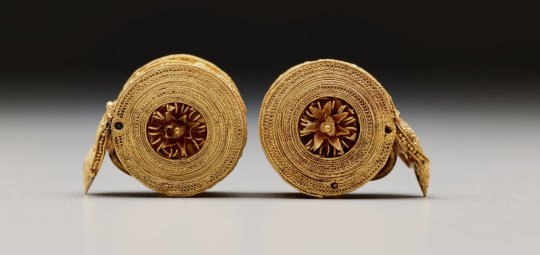
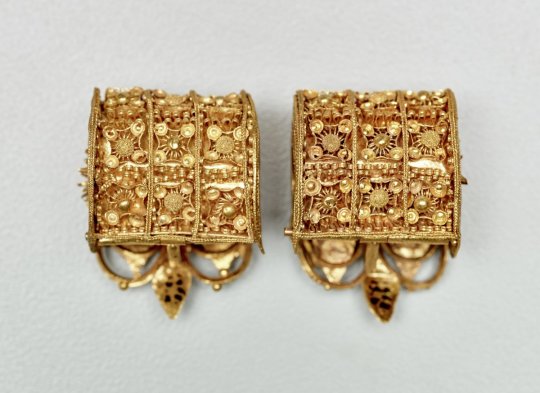
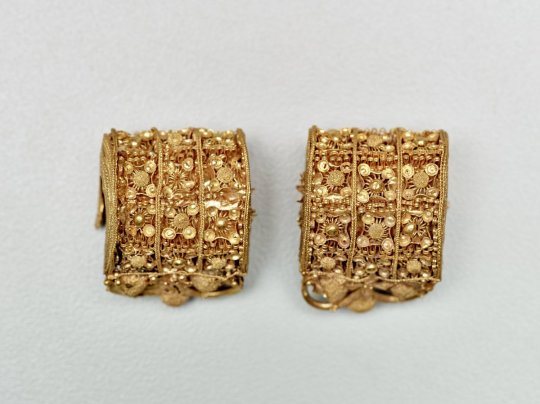

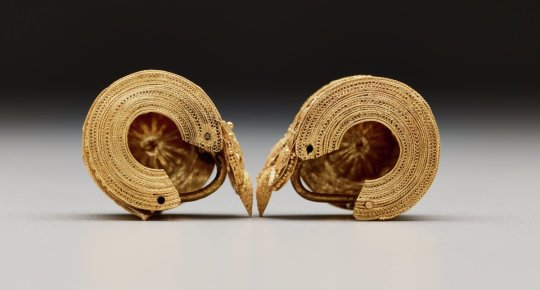
~ Pair of bauletto earrings.
Culture: Etruscan
Date: 6th century B.C.
Medium: Gold
#ancient#ancient art#history#museum#archeology#archaeology#ancient history#ancient jewelry#jewelry#earrings#bauletto earrings#etruscan#gold#6th century B.C.
2K notes
·
View notes
Text
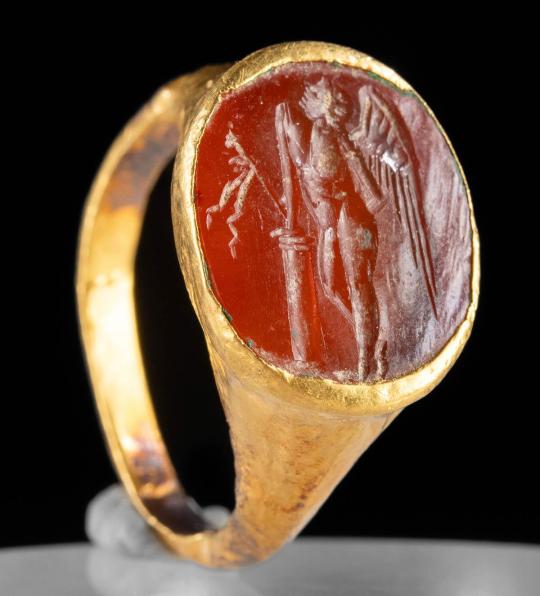
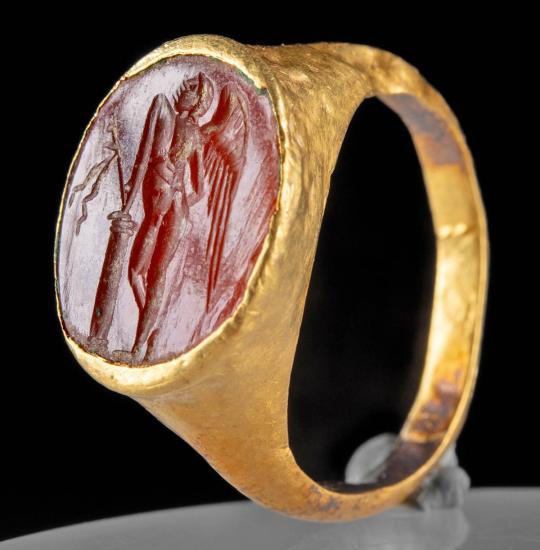
Roman Gold Ring w/ Carnelian Intaglio, Leaning Cupid
Imperial period, ca. 1st to 3rd century CE
#Roman Gold Ring#Imperial period#ca. 1st to 3rd century CE#gold#gold jewelry#ancient jewelry#ancient artifacts#archeology#archeolgst#history#history news#ancient history#ancient culture#ancient civilizations#ancient rome#roman history#roman empire#roman art
641 notes
·
View notes
Text


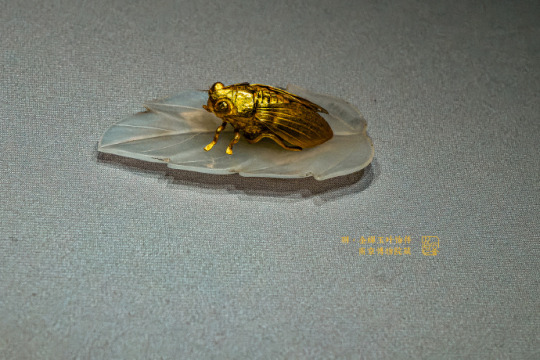

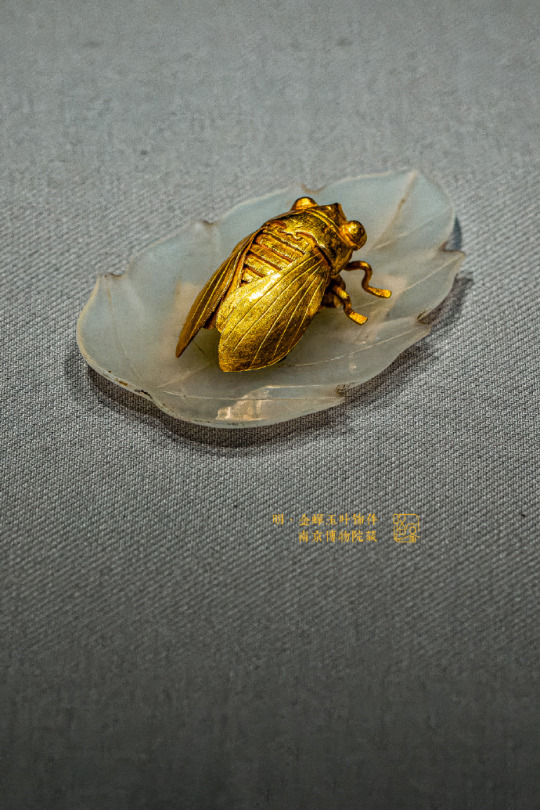
Nature Inspired: Golden Cicada Resting On a Jade Leaf
Exquisite ornament of the Ming dynasty.
Total weight of the insect figurine, made of 95% pure gold, is 4.65 g. The thickness of the finely crafted wings is only 2 mm.
Unearthed in Boshiwu (博士塢), Wufeng Mountain, Suzhou. Now exhibited in Nanjing Museum (南京博物院).
Photo: ©南京博物院
#ancient china#chinese culture#chinese art#ming dynasty#antique jewelry#chinese jewelry#jewelry design#jewelry#ancient jewelry#gold#chinese miniatures#miniature#miniature sculpture#miniature art#jade#jadeite#nephrite#carved#cicada#bug#insects#beetle#leaf art
448 notes
·
View notes
Text

Amethyst Intaglio Circa 1st Century, B.C. - A.D. Roman, Possibly Carved by Master Gem Carver, Dioscurides, Who Was The Favorite Gem Carver Of Emperor Augustus
Source: Archeology and The Ancient Worlds via Facebook/Meta
#amethyst#intaglio#ancient jewelry#precious gemstones#high jewelry#luxury jewelry#fine jewelry#fine jewellery pieces#dioscurides#emperor augustus
457 notes
·
View notes
Text
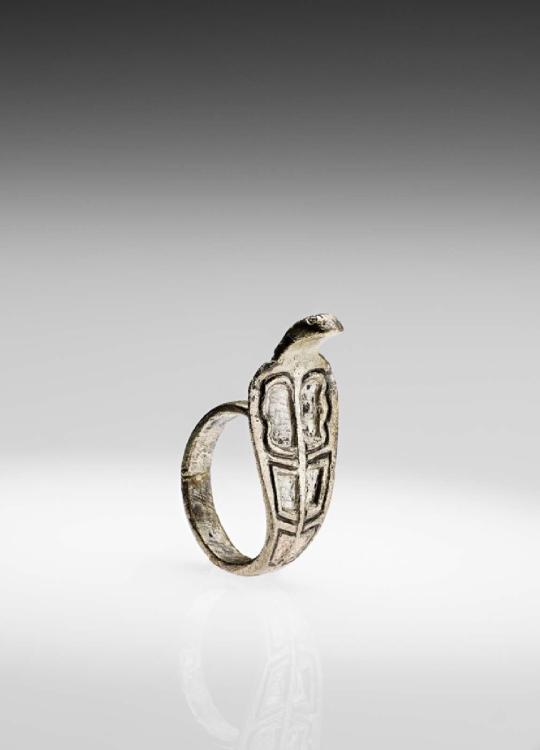
Ring in the form of a rearing cobra, Nubia, 100-300 AD
from The Museum of Fine Arts, Boston
3K notes
·
View notes
Text

Carnelian fish pendant, Egypt, 18th Dynasty, 1390-1295 BC
from The Walters Art Museum
2K notes
·
View notes
Text


Egyptian
Cuff Bracelets Decorated with Cats
New Kingdom, ca. 1479-1425 B.C.E.
#egyptian art#Egyptian jewelry#ancient egyptian#ancient egypt#ancient art#ancient jewelry#ancient people#egyptian history#egyptian culture#egyptian cat#cat aesthetic#catblr#beautiful cats#cats in art#cat art#cat jewelry#aesthetic#beauty#jewelry#ancient civilizations#art history#aesthetictumblr#tumblraesthetic#tumblrpic#tumblrpictures#tumblr art#tumblrstyle#artists on tumblr#egyptology
336 notes
·
View notes
Text
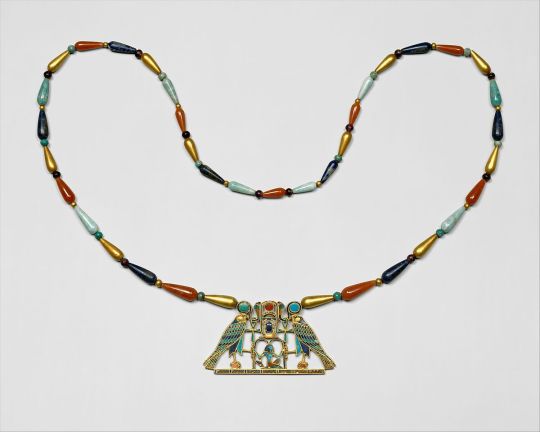

Pectoral and Necklace of Sithathoryunet with the Name of Senwosret II, Middle Kingdomca. 1887–1878 B.C.
„Hieroglyphic signs make up the design, and the whole may be read:
The god of the rising sun grants life and dominion over all that the sun encircles for one million one hundred thousand years [i.e., eternity] to King Khakheperre [Senwosret II].”
317 notes
·
View notes
Text

Gold bracelet with emeralds and pearls, Roman Egypt, 1st-2nd century AD
from The British Museum
771 notes
·
View notes
Text
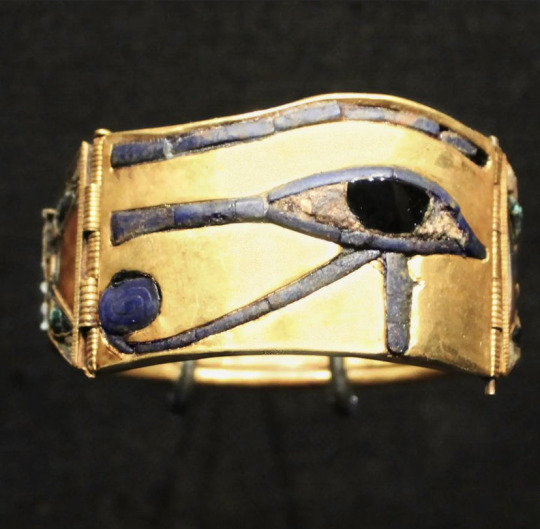
Bangle of Tutankhamen
Gold and jewels inlay Udjat Eye
18th Dynasty, New Kingdom
#art#archaeology#ancient#egyptian art#egyptology#ancient egypt#ancient jewelry#gold jewelry#jewelry#gold#jewels#tutankhamen#tutankhamun#tutankamon#new kingdom
222 notes
·
View notes
Text
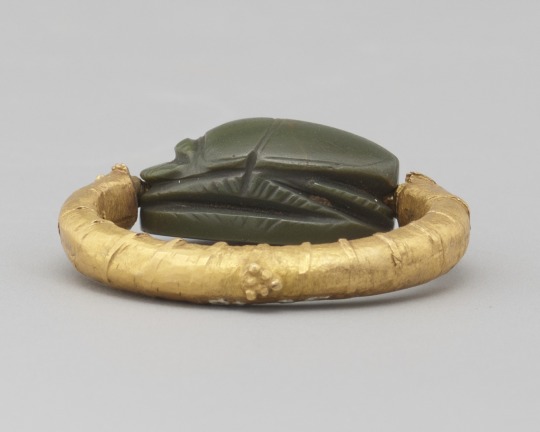
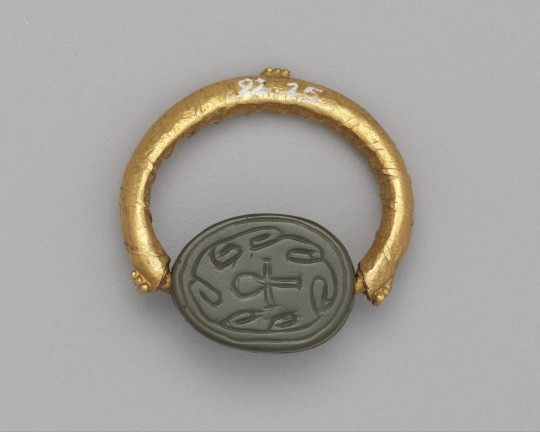
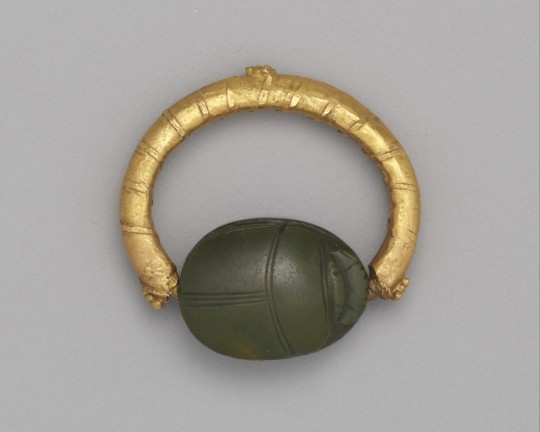

~ Ring with a Scarab Bezel.
Place of origin: Egypt
Date: 1985–1550 B.C.
Medium: Gold and green jasper.
#ancient#ancient art#history#museum#archeology#ancient egypt#ancient history#archaeology#ancient jewelry#ring#ring with scarab bezel#scarab#gold#green jasper#1985 b.c.#1550 b.c.
1K notes
·
View notes
Text



ROMAN GARNET INTAGLIO IN GOLD RING
Ca. 1-200 AD
#ROMAN GARNET INTAGLIO IN GOLD RING#Ca. 1-200 AD#gold#gold jewelry#roman jewelry#ancient jewelry#ancient artifacts#archeology#archeolgst#history#history news#ancient history#ancient culture#ancient civilizations#ancient rome#roman history#roman empire#roman art
739 notes
·
View notes
Text

glass beads, c. Late Bronze Age (approximately 3200 years ago), found at Kongehøj, Denmark
Currently in the collection of the National Museum of Denmark
677 notes
·
View notes
Text
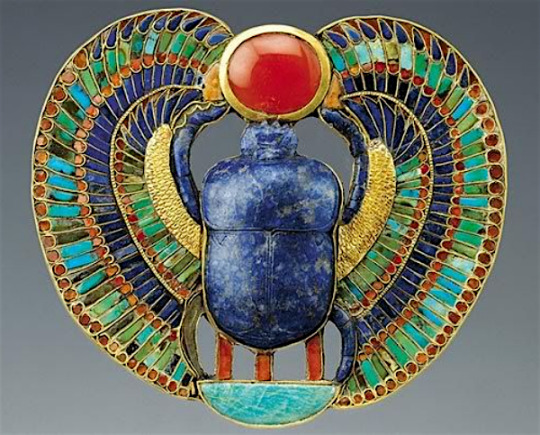
Pectoral With Lapis Lazuli Scarab Found In The Tomb Of King Tutankhamun In 1922
Source: thejewelryloupe.com
#ancient jewelry#ancient egyptian jewelry#egyptian art#egyptian artifacts#lapis lazuli#scarab#king tut
315 notes
·
View notes
Text

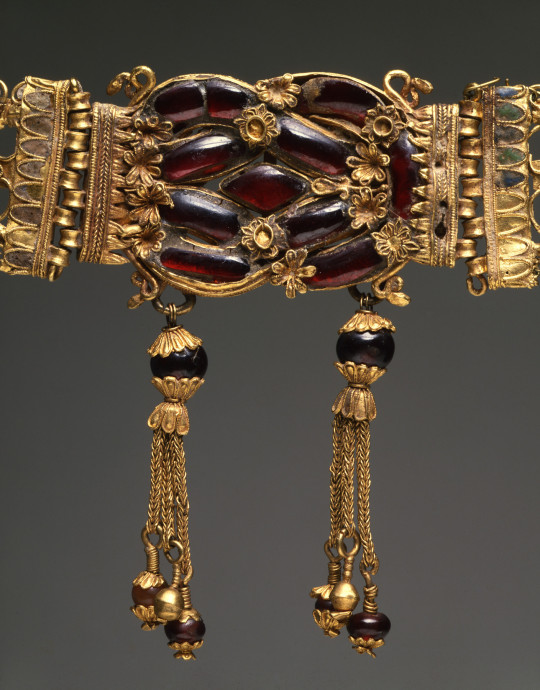
Gold diadem with carnelian Herakles knot, Macedonia, 3rd-2nd century BC
from The Walters Art Museum
2K notes
·
View notes